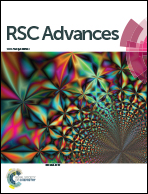Applications of supramolecular capsules derived from resorcin[4]arenes, calix[n]arenes and metallo-ligands: from biology to catalysis
Abstract
Supramolecular architectures developed after the initial studies of Cram, Lehn and Pedersen have become structurally complex but fascinating. In this context, supramolecular capsules based on resorcin[4]arenes, calix[n]arenes or metal–ligand structures are dynamic assemblies inspired by biological systems. The reversible formation of these assemblies, combined with the possibility to modify their dimensions and shapes in the presence of a guest (concepts of reversibility and adaptivity) make them similar to biological macromolecules, such as proteins and enzymes. The small space inside a supramolecular capsule is characterized by different properties compared to the bulk solution. This review describes concrete applications of capsular supramolecular self-assemblies in the biomedical field, in catalysis and in material science.
![Graphical abstract: Applications of supramolecular capsules derived from resorcin[4]arenes, calix[n]arenes and metallo-ligands: from biology to catalysis](/en/Image/Get?imageInfo.ImageType=GA&imageInfo.ImageIdentifier.ManuscriptID=C5RA09364C&imageInfo.ImageIdentifier.Year=2015)

 Please wait while we load your content...
Please wait while we load your content...